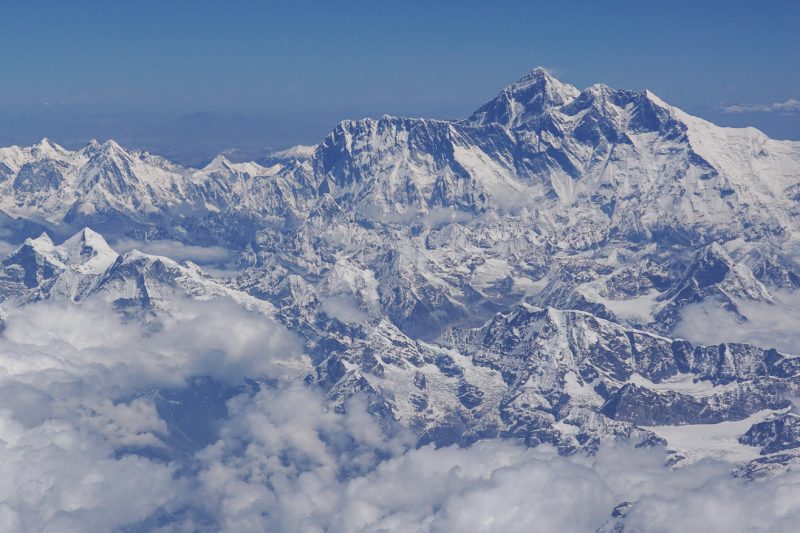Pandemic shuts down Everest as Nepal suspends all permits
As well as suspending all climbing permits Nepal also stopped issuing tourist visas on arrival (Sarah LAI)
Kathmandu (AFP) – Nepal on Friday barred climbers from all mountains — including Everest — over the coronavirus pandemic, in a major blow to its tourism industry.
The Himalayan country, which has so far confirmed one coronavirus case, earns 4.4 million dollars a year from climbing permits while the losses to expedition organisers will be even higher.
As well as suspending all climbing permits, Nepal stopped issuing tourist visas on arrival, Yogesh Bhattarai, Minister for Culture Tourism and Civil Aviation told AFP.
“The government has decided to suspend all spring expeditions and scrap permits for the time being. The decision can be reviewed after analysing the global scenario over the coming month,” tourism minister Yogesh Bhattara told AFP.
Expedition organisers and Nepal tourism professionals said the move, which came a day after China barred access from its side, was justified but would cause a financial disaster.
Nepal, still recovering from a devastating 2015 earthquake, was also hoping to attract two million tourists for the first time in 2020, celebrating it as a visit Nepal year.
US-based Furtenbach Adventures cancelled a move to shift its operations to Nepal after China closed the mountain on Thursday.
“This is disappointing news for both our expedition leaders and our clients who have trained for months for this year’s climb,” expedition organiser Lukas Furtenbach said in a statement.
Every spring a tented city of hundreds of foreign climbers and support staff grows at the foot of Everest and other peaks. All have to live in close quarters.
As the air thins, breathing is already difficult at higher altitude — adding to medical risks if there is an outbreak of any kind among climbers.
“We understand the dire consequences a COVID-19 outbreak at base camp would have. Sadly, we have to agree that this is a responsible call to make right now,” Furtenbach said.
Nepal has issued only five permits for the season but none for Everest so far.
Everest attracts hundreds of mountaineers from all over the world each spring, when a window of good weather opens up between late April and the end of May, prompting a rush for the summit.
Last year’s spring window saw a record 885 people summit Everest, 644 of them from Nepal and 241 from the northern flank in Tibet.
The traffic-clogged season saw 11 deaths on the mountain, with at least four blamed on overcrowding.
– ‘Devastating consequence’-
But the expedition is not cheap. An Everest permit costs $11,000 and the total cost of the climb can be anything between $30,000 and $80,000.
This will be the third time in the last decade that Everest’s summit will remain empty.
Climbers abandoned the mountain after the 2015 earthquake triggered an avalanche which killed 18 people at Everest base camp before the season began.
Only one climber reached the summit in 2014, when an avalanche claimed the lives of 16 Nepali guides on the notorious Khumbu icefall that sits above base camp, forcing organisers to cancel their expeditions.
Santa Bir Lama, president of Nepal’s mountaineering association, said the cancellation will have serious repercussion on the tourism industry of the country.
“It would have a devastating impact on our tourism and economy. The companies will suffer and workers even more. But it is a responsible thing to do considering the risks,” Lama said.
Many guides and support staff depend on the short climbing season for the bulk of their annual earnings.
“It will be very difficult this year. Not only Everest, we might not get work on other mountains either. All of us have families and children to send to school. This is when we earn the most,” said Temba Bhote, a guide on Everest.
Disclaimer: Validity of the above story is for 7 Days from original date of publishing. Source: AFP.


